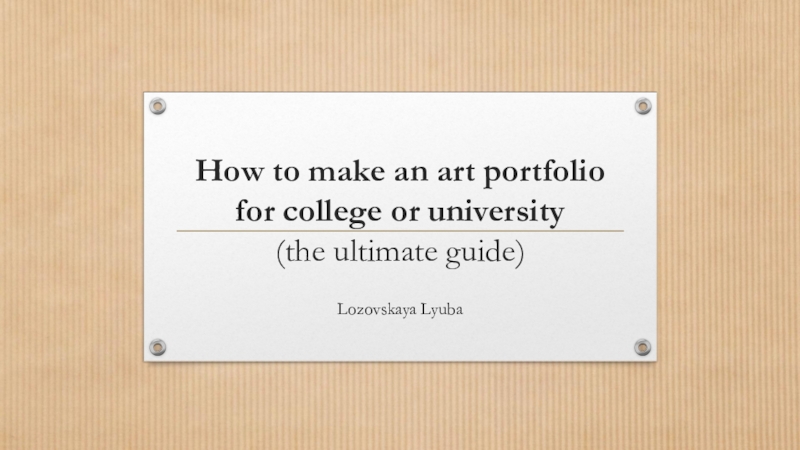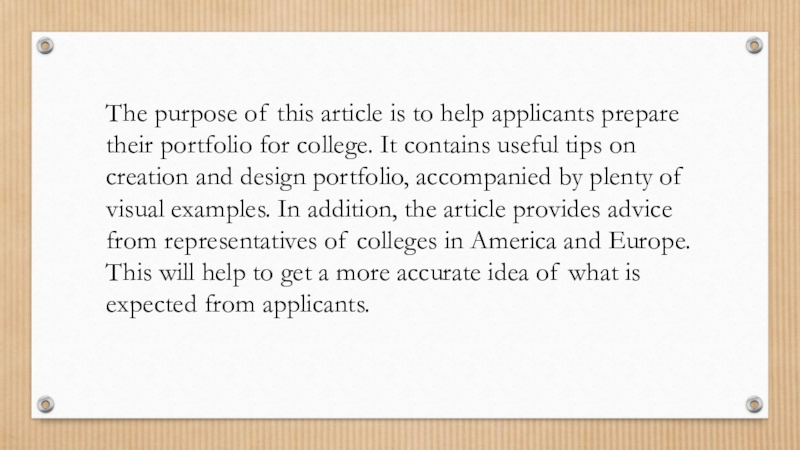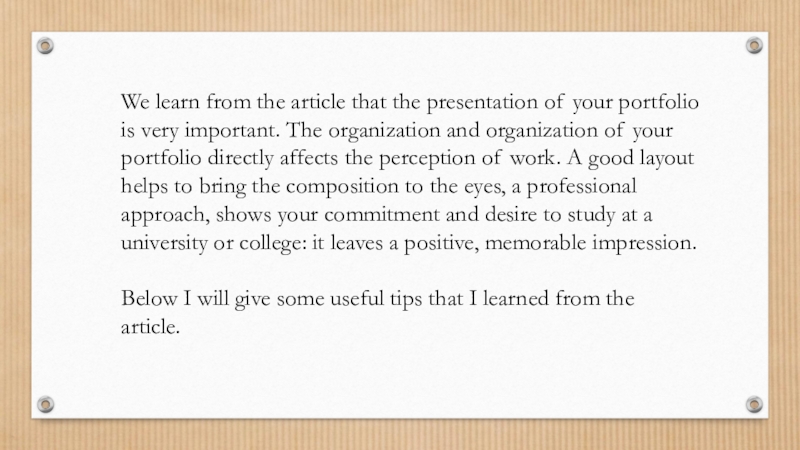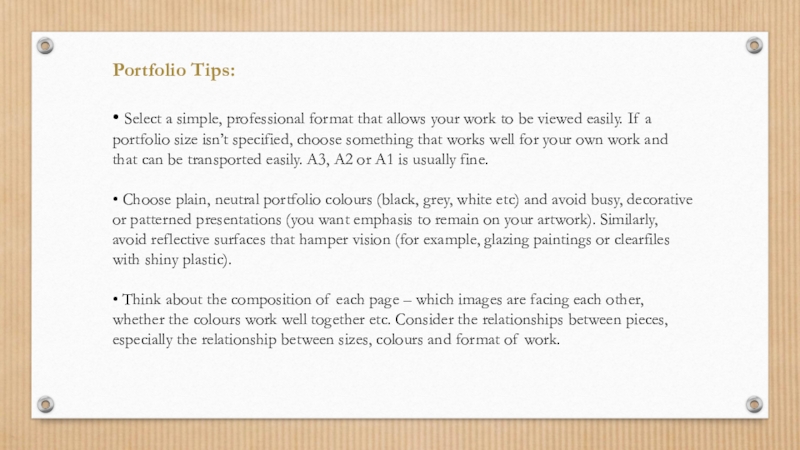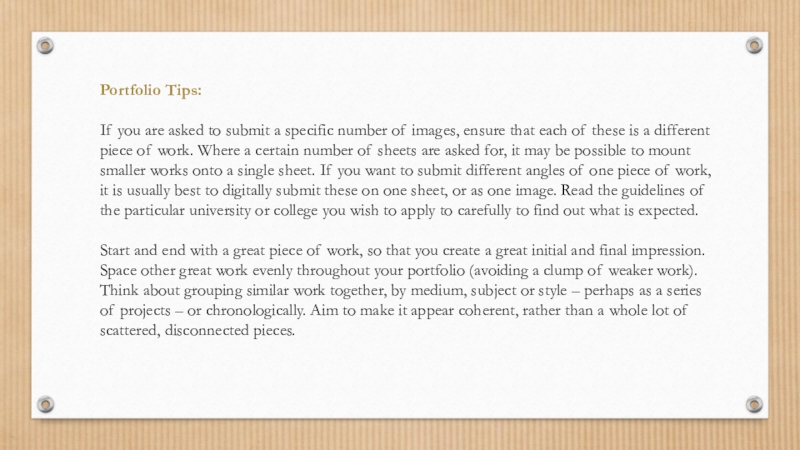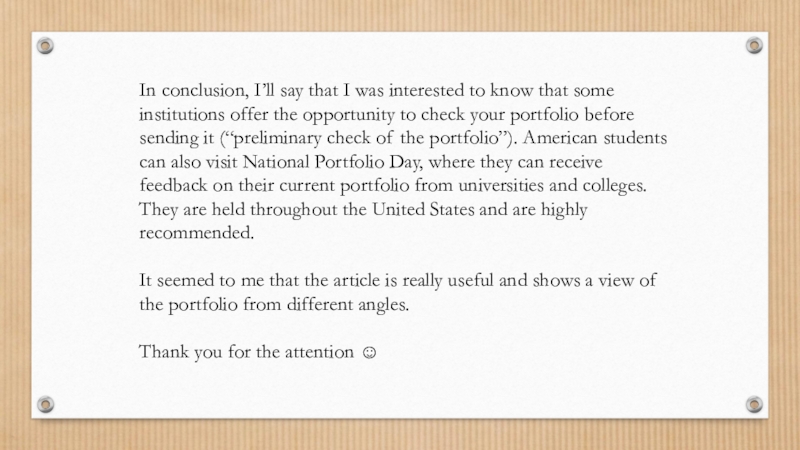Разделы презентаций
- Разное
- Английский язык
- Астрономия
- Алгебра
- Биология
- География
- Геометрия
- Детские презентации
- Информатика
- История
- Литература
- Математика
- Медицина
- Менеджмент
- Музыка
- МХК
- Немецкий язык
- ОБЖ
- Обществознание
- Окружающий мир
- Педагогика
- Русский язык
- Технология
- Физика
- Философия
- Химия
- Шаблоны, картинки для презентаций
- Экология
- Экономика
- Юриспруденция
How to make an art portfolio for college or university ( the ultimate guide)
Содержание
The purpose of this article is to help applicants prepare their portfolio for college. It contains useful tips on creation and design portfolio, accompanied by plenty of visual examples. In addition,
Слайды и текст этой презентации
Слайд 2The purpose of this article is to help applicants prepare
their portfolio for college. It contains useful tips on creation
and design portfolio, accompanied by plenty of visual examples. In addition, the article provides advice from representatives of colleges in America and Europe. This will help to get a more accurate idea of what is expected from applicants.Слайд 3We learn from the article that the presentation of your
portfolio is very important. The organization and organization of your
portfolio directly affects the perception of work. A good layout helps to bring the composition to the eyes, a professional approach, shows your commitment and desire to study at a university or college: it leaves a positive, memorable impression. Below I will give some useful tips that I learned from the article.Слайд 4Portfolio Tips: • Select a simple, professional format that allows your
work to be viewed easily. If a portfolio size isn’t
specified, choose something that works well for your own work and that can be transported easily. A3, A2 or A1 is usually fine.• Choose plain, neutral portfolio colours (black, grey, white etc) and avoid busy, decorative or patterned presentations (you want emphasis to remain on your artwork). Similarly, avoid reflective surfaces that hamper vision (for example, glazing paintings or clearfiles with shiny plastic).
• Think about the composition of each page – which images are facing each other, whether the colours work well together etc. Consider the relationships between pieces, especially the relationship between sizes, colours and format of work.
Слайд 5Portfolio Tips: If you are asked to submit a specific number
of images, ensure that each of these is a different
piece of work. Where a certain number of sheets are asked for, it may be possible to mount smaller works onto a single sheet. If you want to submit different angles of one piece of work, it is usually best to digitally submit these on one sheet, or as one image. Read the guidelines of the particular university or college you wish to apply to carefully to find out what is expected.Start and end with a great piece of work, so that you create a great initial and final impression. Space other great work evenly throughout your portfolio (avoiding a clump of weaker work). Think about grouping similar work together, by medium, subject or style – perhaps as a series of projects – or chronologically. Aim to make it appear coherent, rather than a whole lot of scattered, disconnected pieces.
